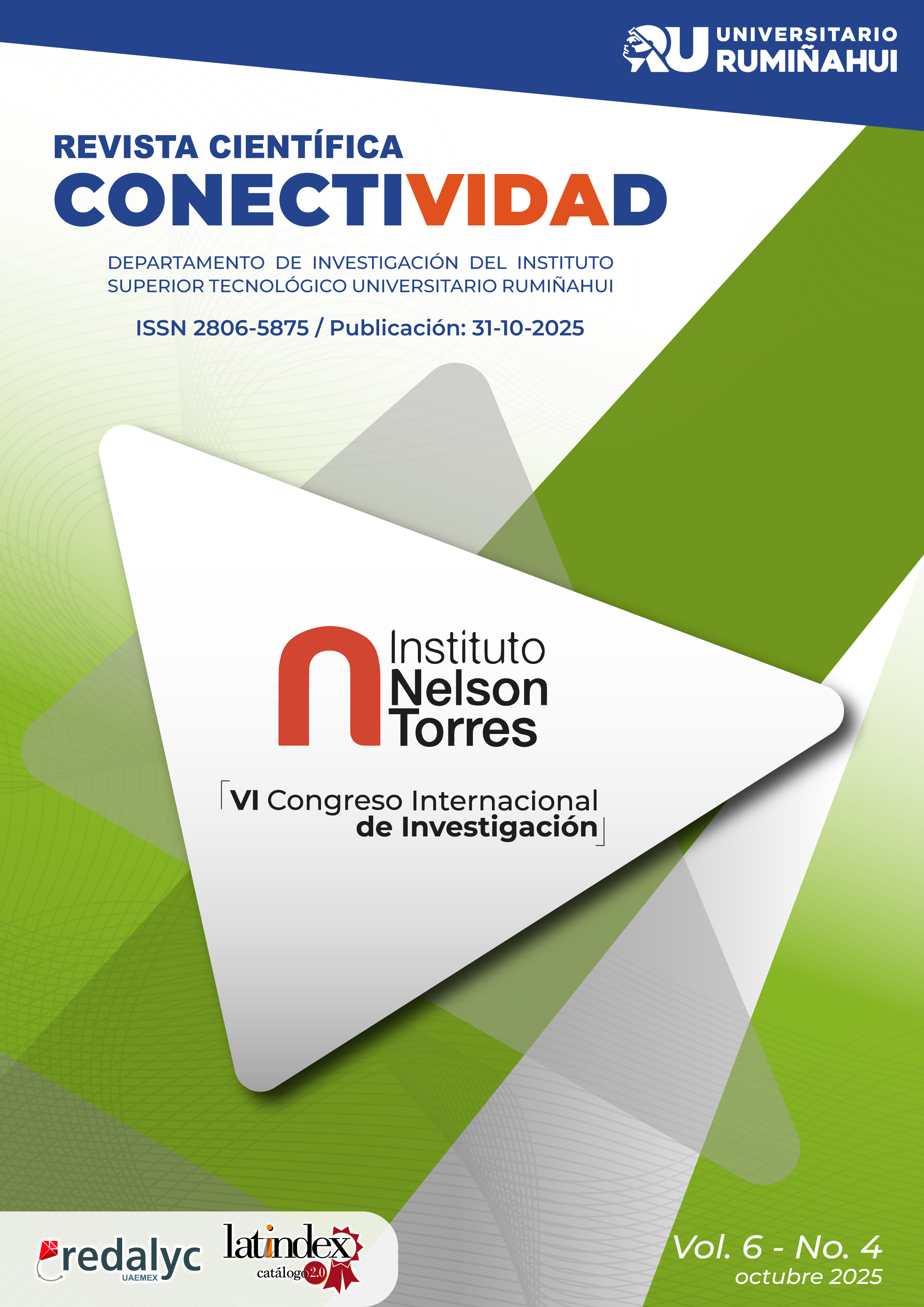Inventory Optimization in Retail SMEs: A Prophet and Python-Based Approach
DOI:
https://doi.org/10.37431/conectividad.v6i4.399Keywords:
Predictive models, Prophet, Phyton, Inventory management, SMEs, RetailAbstract
Efficient inventory management is a major challenge for small and medium-sized enterprises (SMEs) in the retail sector in Latin America. This study proposes the use of Prophet, an open-source tool developed by Meta and implemented in Python, to forecast product demand and optimize inventory planning. We analyzed real daily sales data from 2021 to 2023, with over 15,000 records, achieving an average Mean Absolute Percentage Error (MAPE) of 6.5%, outperforming traditional methods such as ARIMA. Key benefits include a 22% reduction in immobilized inventory and estimated annual savings of $20,000 USD. The solution was implemented in Google Colab, making it accessible and scalable even for companies with limited resources.
References
Ali, H., Rahman, S., & Noor, N. (2023). Retail demand forecasting: A comparative study for multivariate time series. arXiv preprint arXiv:2308.11939. https://doi.org/10.48550/arXiv.2308.11939
Bergmeir, C., Hyndman, R. J., & Koo, B. (2022). Comparing Prophet, ARIMA, and deep learning models for time series forecasting in retail. International Journal of Forecasting, 38(4), 1328–1345. https://doi.org/10.1016/j.ijforecast.2022.03.015
Pérez, L., & Salazar, M. (2022). Transformación digital en las PYMEs latinoamericanas: retos y estrategias de adopción tecnológica. Revista Iberoamericana de Ciencia, Tecnología y Sociedad (CTS), 17(50), 89–104. https://doi.org/10.24215/18524694e056.
Hyndman, R. J., & Athanasopoulos, G. (2021). Forecasting: Principles and practice (3rd ed.). OTexts. https://otexts.com/fpp3/
IBIMA Journal. (2024). Time series demand forecasting based on Prophet model. https://ibima.org/accepted-paper/time-series-demand-forecasting-based-on-prophet-model
Kumar, S., & Ranjan, R. (2021). A comprehensive study on demand forecasting methods and algorithms for retail industries. International Journal of Computer Applications, 183(24), 1–8. https://www.ijcaonline.org
López, F., & Ramírez, J. (2023). Predicción de la demanda en el comercio minorista latinoamericano mediante modelos de series temporales y aprendizaje automático. Revista Ingeniería Industrial, 44(3), 85–98. https://doi.org/10.4067/S0718-33052023000300085
Mehta, P., & Singh, R. (2025). Demand forecasting for improved inventory management in small and medium-sized businesses. Journal of Applied Natural Science and Technology, 12(1), 57–144. https://doi.org/10.23887/janapati.v12i1.57144 DOI: https://doi.org/10.23887/janapati.v12i1.57144
Meta Platforms Inc. (2024). Prophet documentation. https://facebook.github.io/prophet/
ONTSI (Observatorio Nacional de las Telecomunicaciones y de la Sociedad de la Información). (2023). Informe de digitalización de las PYMEs 2023. Ministerio de Asuntos Económicos y Transformación Digital. https://www.ontsi.es/es/actualidad/informe-de-digitalizacion-de-las-pymes-2023
Pozo-Benites, K. B., Guadalupe-Sánchez, K. W., Peñarreta-Barrera, E. E., & Meza-Salvatierra, J. K. (2025). Transformación digital de las PYMEs en América Latina: barreras, oportunidades y estrategias para la competitividad. Multidisciplinary Latin American Journal (MLAJ), 3(2), 236–255. https://doi.org/10.62131/MLAJ-V3-N2-015 DOI: https://doi.org/10.62131/MLAJ-V3-N2-015
Taylor, S. J., & Letham, B. (2018). Forecasting at scale. The American Statistician, 72(1), 37–45. https://doi.org/10.1080/00031305.2017.1380080 DOI: https://doi.org/10.1080/00031305.2017.1380080
Published
How to Cite
Issue
Section
Categories
License
Copyright (c) 2025 Instituto Superior Tecnológico Universitario Rumiñahui

This work is licensed under a Creative Commons Attribution-NonCommercial 4.0 International License.
The originals published in the electronic edition under the first publication rights of the journal belong to the Instituto Superior Tecnológico Universitario Rumiñahui; therefore, it is necessary to cite the source in any partial or total reproduction. All the contents of the electronic journal are distributed under a Creative Commons Attribution-Noncommercial 4.0 International (CC-BY-NC 4.0) license.







2.png)





